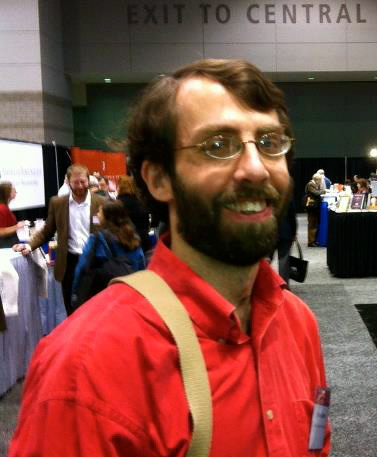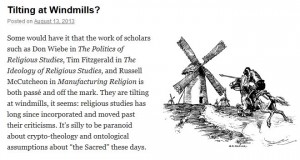 Monica Miller was recently featured on the front page of The Morning Call in an interview discussing whether it is okay to use the N-Word and its implications for various groups. See what she says in the interview here.
Monica Miller was recently featured on the front page of The Morning Call in an interview discussing whether it is okay to use the N-Word and its implications for various groups. See what she says in the interview here.

A Peer Reviewed Blog
 Monica Miller was recently featured on the front page of The Morning Call in an interview discussing whether it is okay to use the N-Word and its implications for various groups. See what she says in the interview here.
Monica Miller was recently featured on the front page of The Morning Call in an interview discussing whether it is okay to use the N-Word and its implications for various groups. See what she says in the interview here.
“On the Spot” backs members of Culture on the Edge into a corner to talk about their backgrounds, their ongoing work, and what might be gained by an alternative understanding of how identity works.
 Q: Steven, your early work was interested in a specific group that fell between the way we commonly identify some of the world’s religions, so issues of blurred or ambiguous identity have long been a focus for you. How has this interest changed or developed over the past several years?
Q: Steven, your early work was interested in a specific group that fell between the way we commonly identify some of the world’s religions, so issues of blurred or ambiguous identity have long been a focus for you. How has this interest changed or developed over the past several years?
A: When I began to learn about Sindhi Hindus and their inclusion (typically) of the Guru Granth Sahib within their temples, I assumed that they represented a wonderful example of inter-religious harmony. As I conducted my research, I began to see how my assumptions reflected common definitions that some of them directly rejected, as some Sindhi Hindus specifically argue that the Guru Granth Sahib is a Hindu text. Continue reading “On the Spot with Steven Ramey”
“On the Spot” backs members of Culture on the Edge into a corner to talk about their backgrounds, their ongoing work, and what might be gained by an alternative understanding of how identity works.

Q: Vaia, you focused some of your scholarship on ancient Greek texts both before and after beginning to read social theory – could you give us an example of how the theorists you’ve read have affected the way that you now approach these ancient materials?
A: My Masters was on Euripides’ tragedy Hippolytus and the notion of Meden Agan (i.e., moderation) and how it was understood in the 5th century BCE Athens. In order to write my thesis back then, of course, I read a lot of secondary literature and commentaries on the play, heavily descriptive works on the “religion” of the ancient world, and of course how ancients might have thought/felt and the universality of their meanings that (we today presume) stay unalterable in their texts—meanings that modern scholars, with the right tools, will be able to retrieve just like the archaeologists dig up and unearth the past. I did all that in my effort to better understand and recreate that ancient world. This approach to the ancient material has changed once I started reading theorists like Russell McCutcheon, Jonathan Z. Smith, Bruce Lincoln, Michel Foucault, and others; now my data are not just these ancient texts (whether literature, or statues, vases, etc.) but also the commentaries that previously served as my “way into” the ancient world, for I came to realize that the world I was entering was the world and time period of those scholars. Continue reading “On the Spot with Vaia Touna”
“On the Spot” backs members of Culture on the Edge into a corner to talk about their backgrounds, their ongoing work, and what might be gained by an alternative understanding of how identity works.
 Q: Tell us a little bit about your doctoral studies, since they were not carried out in the academic study of religion, yet that’s the field in which you now work as a professor. How was your training in the Department of English relevant to the work you now do and the classes you now teach?
Q: Tell us a little bit about your doctoral studies, since they were not carried out in the academic study of religion, yet that’s the field in which you now work as a professor. How was your training in the Department of English relevant to the work you now do and the classes you now teach?
A: I never expected to end up teaching in a Religious Studies department. But really, my studies in English overlap with the work I now do in a variety of ways. The strands of literary criticism that I found most interesting were ones that questioned the roles of authorship, text, and readership. The more literary theory I read, the more difficult it became for me to see “author” and “text”, for example, as two discrete categories. I remember the first time I read “The Death of the Author” by Roland Barthes—I was completely floored. And that was just the beginning! Continue reading “On the Spot with Merinda Simmons”
“On the Spot” backs members of Culture on the Edge into a corner to talk about their backgrounds, their ongoing work, and what might be gained by an alternative understanding of how identity works.
 Q: Identity and identification are words the members of Culture on the Edge are using to stand in for two different, and likely opposed, scholarly approaches to the study of who we see ourselves and others as being; whereas the first presumes a stable inner quality or sentiment only later projected outward into the public world, the latter starts with a series of public practices and social situations that are eventually interiorized. In your own research specialty – Hip Hop culture and rap music in particular, but also the wider field of the study of African American religion — can you illustrate the difference between these two approaches? Continue reading “On the Spot with Monica Miller”
Q: Identity and identification are words the members of Culture on the Edge are using to stand in for two different, and likely opposed, scholarly approaches to the study of who we see ourselves and others as being; whereas the first presumes a stable inner quality or sentiment only later projected outward into the public world, the latter starts with a series of public practices and social situations that are eventually interiorized. In your own research specialty – Hip Hop culture and rap music in particular, but also the wider field of the study of African American religion — can you illustrate the difference between these two approaches? Continue reading “On the Spot with Monica Miller”
 Interested in current economic issues facing U.S. higher education and how the federal government now plans to address it…? Read the AAUP’s reply to President Obama’s speech.
Interested in current economic issues facing U.S. higher education and how the federal government now plans to address it…? Read the AAUP’s reply to President Obama’s speech.
“On the Spot” backs members of Culture on the Edge into a corner to talk about their backgrounds, their ongoing work, and what might be gained by an alternative understanding of how identity works.
 Q: Craig, the shift that we’re all making at Culture on the Edge – from describing identities that either do or do not complement each other to studying the historically situated identification practices that make it possible to claim an identity – is not all that typical for scholars of religion. Do you agree? And if so, then what did you do your early work on and when (and why) did you start to make this theoretical shift?
Q: Craig, the shift that we’re all making at Culture on the Edge – from describing identities that either do or do not complement each other to studying the historically situated identification practices that make it possible to claim an identity – is not all that typical for scholars of religion. Do you agree? And if so, then what did you do your early work on and when (and why) did you start to make this theoretical shift?
A: I find that a lot of scholars claim that there is, of course, no essence to any religious or cultural tradition, but who then go on to talk as if there was. Continue reading “On the Spot with Craig Martin”
 Listen to a January 2011 lecture (which eventually was published in The Sacred is the Profane), delivered at Leibniz University in Hannover, Germany, by Russell McCutcheon. Continue reading “Religion Before Religion”
Listen to a January 2011 lecture (which eventually was published in The Sacred is the Profane), delivered at Leibniz University in Hannover, Germany, by Russell McCutcheon. Continue reading “Religion Before Religion”
 Interested in Craig Martin‘s thoughts on future directions in the sociology of religion — at least why he thinks some others’ thoughts are sadly inadequate? Click here.
Interested in Craig Martin‘s thoughts on future directions in the sociology of religion — at least why he thinks some others’ thoughts are sadly inadequate? Click here.